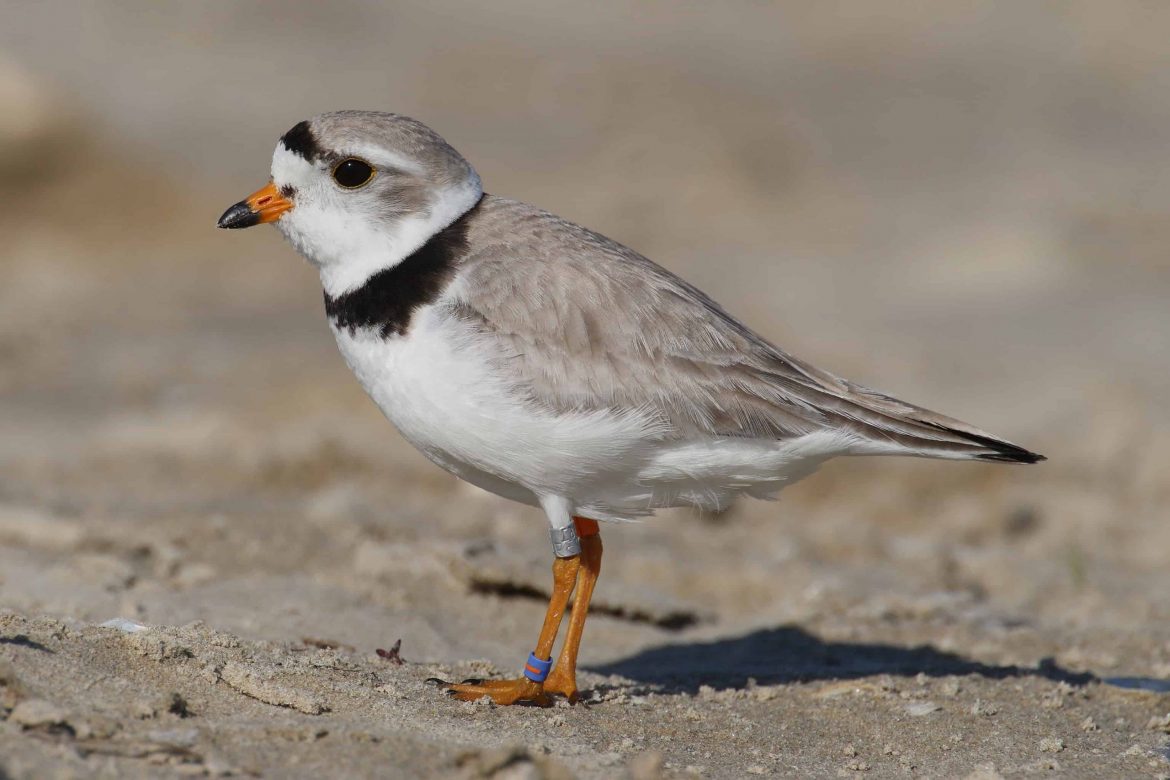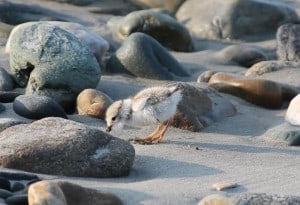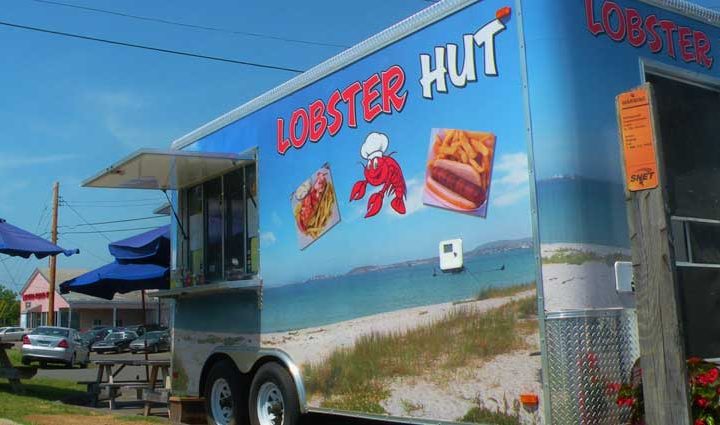
This summer, whether you are walking along the boardwalk or soaking up some rays on the beach, you’ll probably catch a glimpse of a piping plover. Their distinctive peeps and perky prancing along our shores is a privilege to behold and will most definitely provoke a smile.
A migratory bird, the piping plover’s nesting spots range from the Carolinas to Nova Scotia. We are fortunate some have found a home here in Milford. They begin arriving between late April and early May and making their nests, creating a shallow hole lined with shells for their eggs to incubate. After just under a month, the tiny plovers come out of their shells and get their first view of the beach. Their little orange legs scrambling to keep up with the adults is a sight to see.
During the late 1800s, plover feathers were prized by milliners for fashionable hats and subsequently the plover population plummeted. Adding to their plight was the increasing development of shoreline homes. Designated as “threatened” by both the Federal and State governments, their protected status has helped boost their population. The Connecticut Department of Energy and Environmental Protection (DEEP) and the U.S. Fish and Wildlife Service work in conjunction with local organizations like the Audubon Society to help keep track of the nesting plovers. Since the inception of the program in 1984 their numbers have steadily improved and plovers have become regular visitors.
A number of nests are located along the Silver Sands Boardwalk as well as Walnut Beach. Volunteers and wildlife management personnel place fencing and signage around nests so they will not be disturbed by human activities. As they don’t seem like a typical bird nest, and tend to build in shallow depressions, they can be easily missed and trampled by unwary beachgoers.
The piping plovers have a smorgasbord along our shoreline. Feeding on worms, crustaceans, mollusks, eggs, and small marine animals, they hunt and peck the beaches and sandbars for their sustenance. Only around 6-7 inches long, adults weigh in at around 2 ounces and live between 8-14 years of age.
The best way to keep the piping plovers returning to our beaches is to be aware of their presence. Mind the fences and signs. You can also contact the Milford Audubon Society and volunteer your time.
The piping plovers are unique little birds. Their orange feet, round bodies, and little beaks charm anyone who sees them. So be sure to make your way to the beach and keep an eye out for these delightful summer residents.
—Lillian Finch





